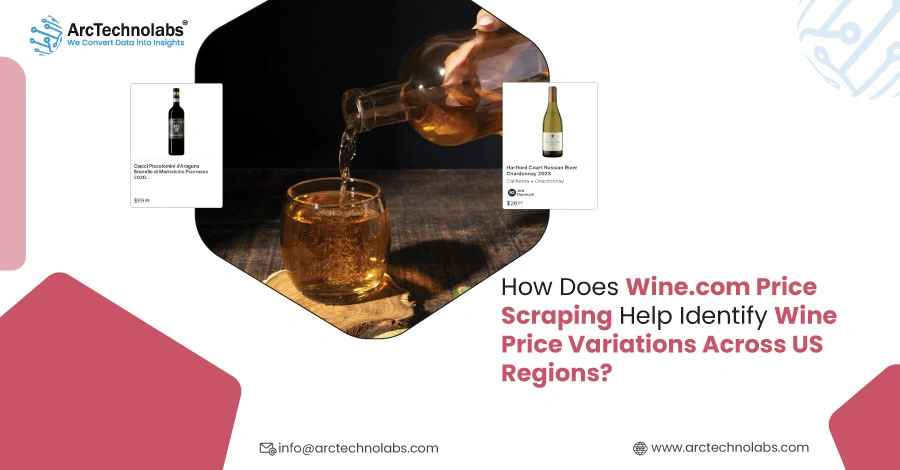
Introduction
The U.S. wine market is undergoing a clear shift, with pricing now increasingly shaped by geographic factors. For retailers, distributors, and consumers, it's no longer just about the brand; regional taxes, shipping restrictions, local demand, and economic conditions are driving noticeable price differences across states. This highlights the growing need for E-Commerce Wine Data Extraction to track and respond to these regional pricing trends effectively.
Understanding these pricing gaps requires more than just traditional market observation. With the rise of advanced digital tools, Wine.com Price Scraping has emerged as a vital method for extracting accurate, real-time insights into how wine prices shift across U.S. regions. This data-driven approach provides a clear view of regional trends, enabling stakeholders to adapt their strategies and stay competitive in an ever-evolving wine industry.
Why Regional Wine Price Trends Demand Attention?
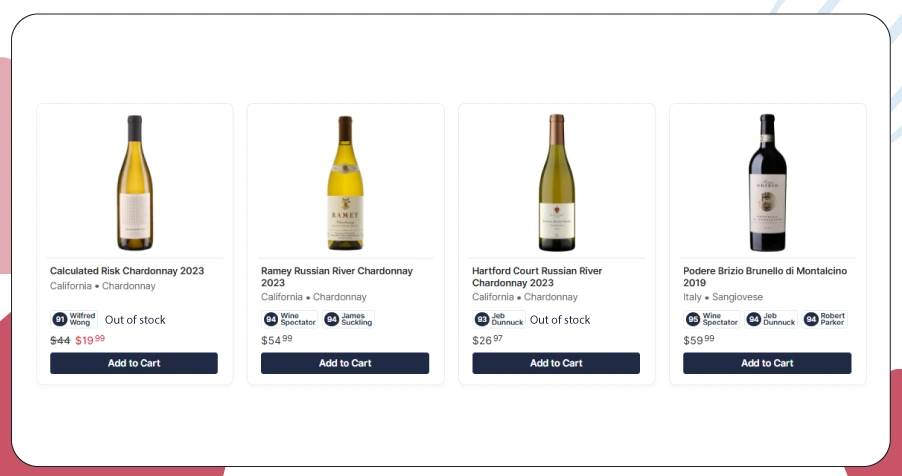
The U.S. wine market isn’t one-size-fits-all—every state has its own consumer behavior, regulatory landscape, and price dynamics. For businesses operating in this space, ignoring regional nuances often results in suboptimal pricing, unsold stock, or misaligned marketing efforts. Understanding regional trends is no longer optional—it's essential.
Here’s how region-specific data improves strategy:
- Smarter inventory decisions aligned with state-level demand.
- Geo-targeted campaigns based on local preferences.
- Adaptive pricing strategies tailored to each market.
- Informed tax compliance is tied to state-specific rates.
With this growing need, companies increasingly rely on automated solutions to Scrape Wine Prices By State USA to decode pricing patterns, forecast sales, and drive profit-focused decisions.
How Digital Listings Uncover Real-World Behavior?
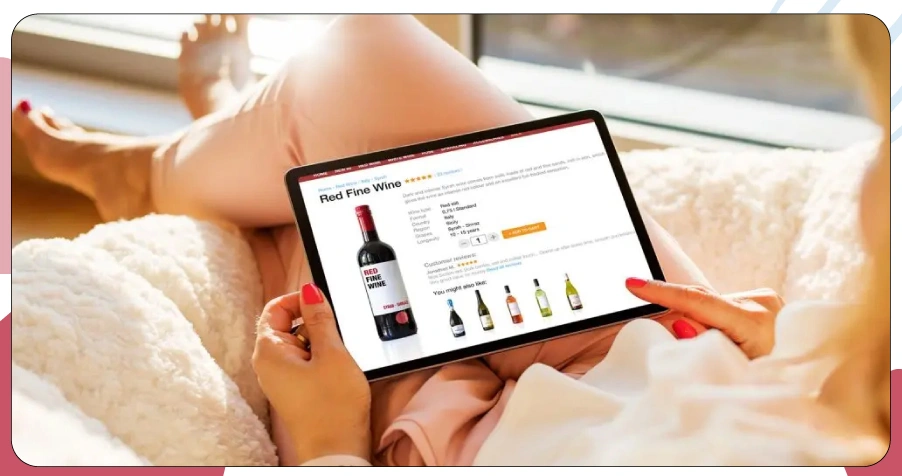
E-commerce platforms have become the front lines of wine retail, and websites like Wine.com reflect far more than just price—they mirror consumer sentiment, regional demand, and product movement.
By leveraging automation to Extract Product Data From Wine.com, businesses can collect valuable attributes such as:
- Bottle pricing by region
- Customer ratings and reviews
- Stock levels and availability
- Promotional timelines and descriptions
Such detailed, real-time information forms the base for understanding Wine.com US States Pricing Trends, giving insight into how digital behavior reflects real-world sales outcomes.
Key Insights Unlocked by State-Level Wine Data
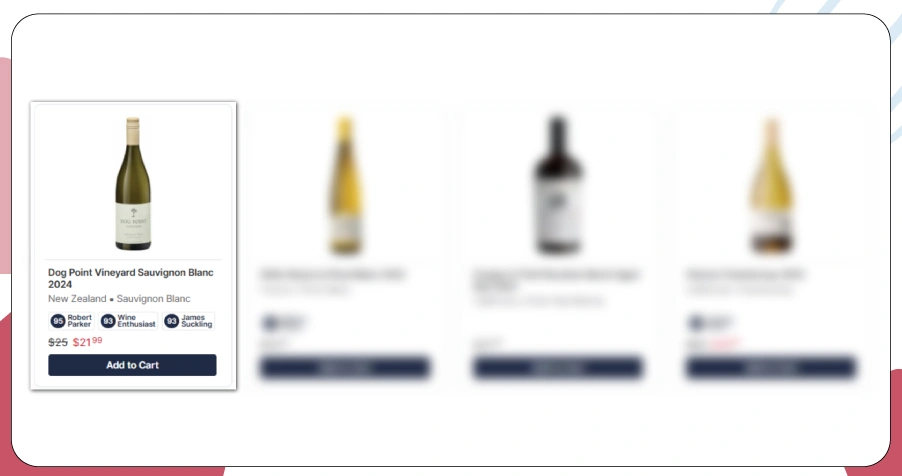
When wine pricing data is cleaned and segmented by state, the outcomes go beyond surface-level stats—they reveal deep, actionable trends. Below are some high-impact insights surfaced from such datasets:
- Price Range Disparities: A $22 bottle in Texas may cost $28 in Illinois due to differences in distribution costs and taxes.
- Top Varietals by State: Cabernet in California vs. Riesling in Michigan.
- Availability Gaps: Some states run out of popular wines faster, indicating supply-demand imbalances.
- Seasonal Price Shifts: Events such as Thanksgiving or Valentine’s Day can trigger temporary price spikes.
All of these dimensions can be captured in a Wine Price Dataset by Region, providing a comprehensive view of microeconomic shifts in wine retail across the country.
Turning Raw Wine Data Into Strategic Action
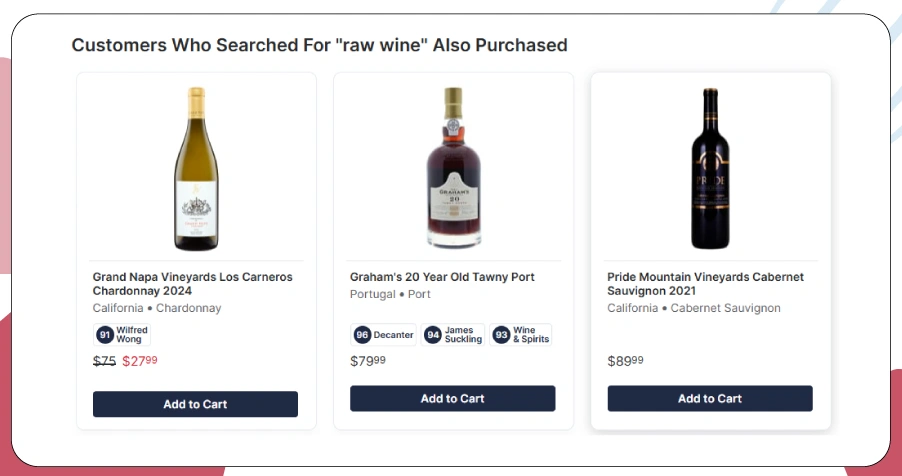
The end goal of any data scraping initiative isn't just collection—it's strategic impact. Through Wine Price Analysis wine.com, brands gain a competitive lens into their performance across different markets.
Examples include:
- Tracking price consistency across bottle tiers (e.g., luxury vs. budget).
- Spotting emerging demand in niche geographic pockets.
- Building predictive models to estimate future demand spikes.
Ultimately, these insights inform broader Wine Pricing Intelligence USA strategies, where price optimization, logistics, and marketing all benefit from a data-driven approach.
Real-World Use Cases Across the Wine Industry
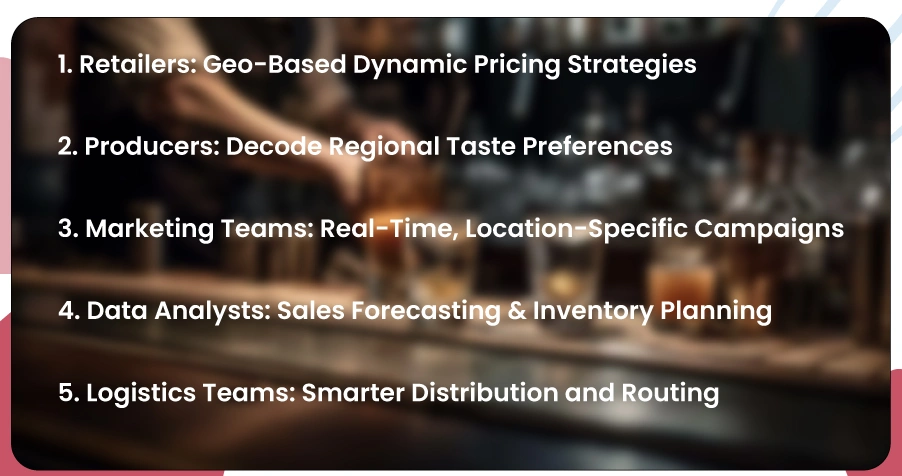
The ability to extract and analyze wine and liquor price data opens transformative possibilities across the value chain. Whether you're a wine distributor, producer, marketing strategist, or supply chain planner, region-specific pricing data empowers smarter, more responsive decisions.
1. Retailers: Geo-Based Dynamic Pricing Strategies
Retailers can gain a competitive edge by utilizing pricing data to tailor their offerings and pricing strategies to local demand patterns.
- Adjust shelf prices dynamically based on state-level competitor trends and market conditions to optimize sales.
- Optimize discounts by comparing local prices to national averages.
- Identify high-margin products performing well in specific regions.
- Design store-level product placements using local demand signals.
2. Producers: Decode Regional Taste Preferences
For wine producers and distillers, regional price trends reveal evolving consumer behavior and product-market fit.
- Identify which varieties or product lines sell at higher margins in different states.
- Tailor production volume by analyzing historical demand across regions.
- Enhance distribution plans by targeting high-conversion areas.
- Support R&D and innovation with localized taste insights.
3. Marketing Teams: Real-Time, Location-Specific Campaigns
Marketers can move beyond broad messaging to deliver hyper-targeted campaigns backed by real-time price signals.
- Create geo-targeted ads aligned with regional pricing trends.
- Launch localized promotions based on competitive gaps.
- Refine messaging to reflect region-specific consumption patterns.
- Align influencer or digital strategies with high-demand markets.
4. Data Analysts: Sales Forecasting & Inventory Planning
Data professionals can extract patterns from regional price shifts to guide operational efficiency and inventory decisions.
- Anticipate seasonal demand surges based on historical pricing.
- Align inventory levels with projected sales per state.
- Spot underperforming markets for early intervention.
- Model profitability using past price and demand correlations.
5. Logistics Teams: Smarter Distribution and Routing
Pricing data also supports operational planning, especially in aligning supply logistics with demand intensity across geographies.
- Prioritize shipping routes to high-demand or high-margin regions.
- Reduce overstocking in slow-moving territories.
- Optimize warehouse locations based on regional consumption trends.
- Improve turnaround time by forecasting market saturation levels.
Many businesses are now adopting advanced data scraping tools to Scrape Liquor Store Prices Online, empowering them to integrate precise, location-based insights into their operations, marketing, and inventory strategies, making smarter, faster, and regionally relevant decisions a reality.
Building a State-Wise Wine Comparison Dataset
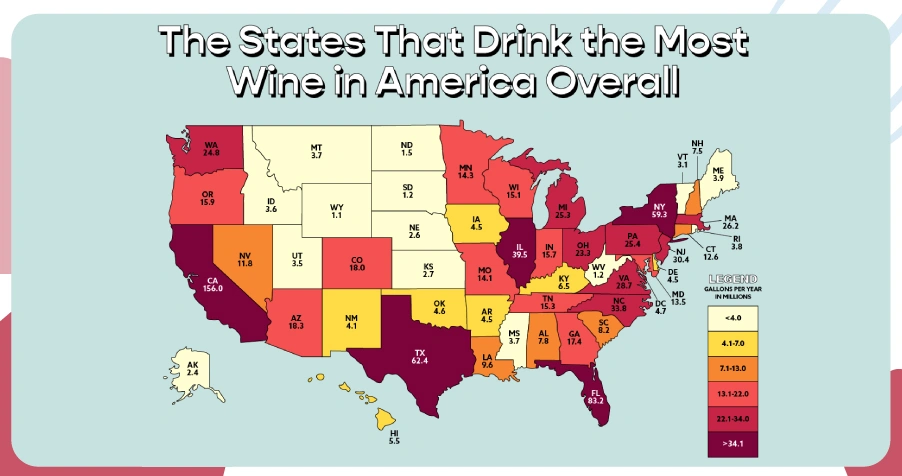
Collecting data from a centralized source, such as Wine.com, ensures standardization across states and SKUs. This consistency is crucial for building a reliable and insightful Wine Product Comparison Dataset.
This dataset enables companies to:
- Benchmark pricing across different labels and regions.
- Identify premium, mid-tier, and budget wine segments.
- Analyze historical pricing trends for specific SKUs over time.
Such a dataset serves as the backbone for predictive models, sales dashboards, and even AI-based recommendation engines, delivering scalable insights from a single, structured source.
The Technical Backbone of Price Scraping
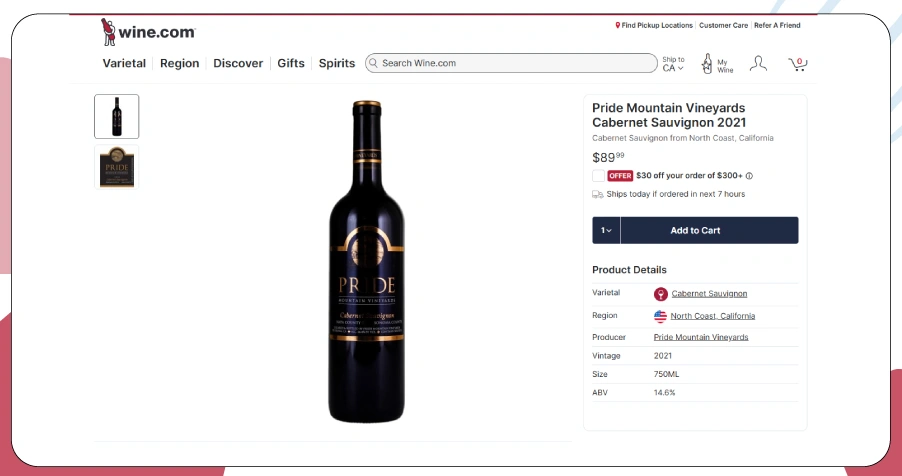
Behind every successful pricing dashboard lies a technically robust and ethically sound scraping infrastructure. Businesses commonly use custom scripts and browser automation for Scraping Wine Websites For Price Data, especially from platforms like Wine.com.
Common data fields extracted include:
- Product name, bottle size, varietal, and SKU.
- Regional availability and pricing breakdown.
- Active promotions and time-sensitive offers.
- Star ratings and written reviews.
Once gathered, the information is molded into a Regional Wine Pricing Dataset that can be updated daily, weekly, or monthly, depending on the business goals.
Importance of Real-Time Price Monitoring
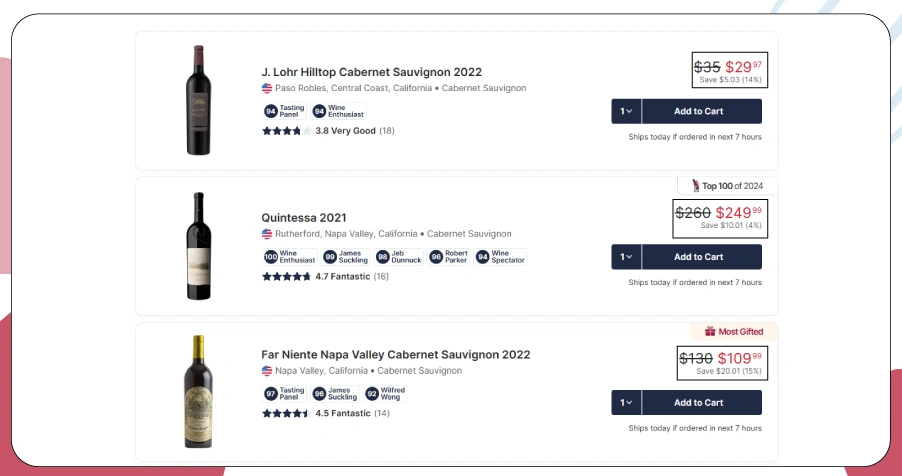
Today’s wine industry thrives on agility. With e-commerce evolving rapidly, static datasets fall short. Businesses need instant access to market shifts—something a Real-Time Wine Price Tracker USA can deliver.
Benefits include:
- Immediate alerts on competitor price drops.
- Fast adaptation to regional supply-demand changes.
- Efficient planning around promotions or overstocked SKUs.
With real-time updates, companies can course-correct more quickly, react to changes in consumer behavior, and protect their margins with better foresight.
Why Scraping Wine.com Over Others?
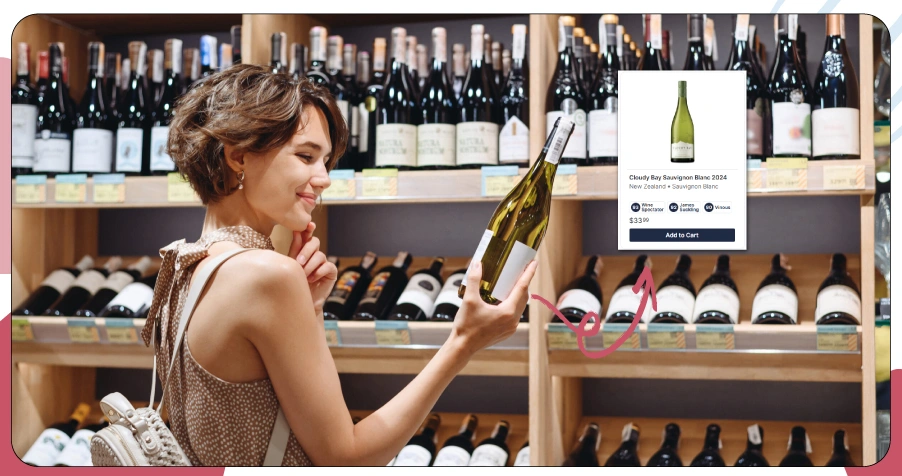
Among online platforms, Wine.com stands out due to its national reach and high-quality product listings. It’s the go-to destination for teams focusing on Online Wine Store Data Scraping, offering:
- Uniform product metadata and naming standards.
- Advanced filtering options by state, varietal, or vintage.
- State-wise visibility into product stock and pricing.
These advantages make Wine.com an ideal foundation for building a scalable price intelligence framework, which can then be expanded to regional wine shops or independent store listings.
Real-World Example of Price Variation
Let’s consider a practical scenario involving a popular Napa Valley Cabernet Sauvignon. When monitored across various U.S. states, the same 750ml bottle reflects significant price discrepancies, as shown below:
| State | Price (750ml) | Shipping Policy |
|---|---|---|
| California | $28.99 | Free shipping on orders over $50 |
| Texas | $31.49 | Standard flat rate of $10 |
| Florida | $33.00 | Shipping varies by county |
| New York | $35.99 | Restrictions on certain brands |
This real-time pricing snapshot, derived using tools designed to Scrape Wine Prices By State USA, highlights how significantly state regulations, shipping policies, and local demand can influence retail pricing. For wineries, distributors, and pricing analysts, these insights are crucial for developing a data-driven regional pricing strategy.
Turning Data Into Visual Wine Intelligence
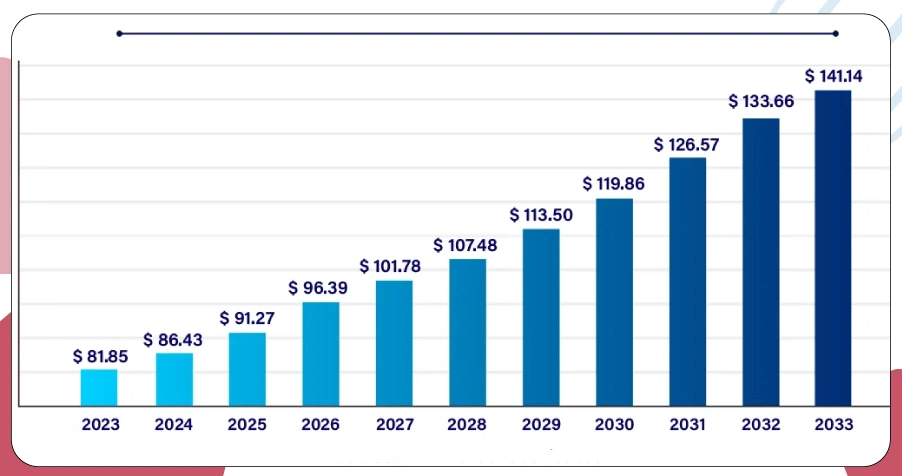
Once pricing data is extracted, brands are no longer limited to static tables or spreadsheets. They’re transforming complex figures into compelling visual stories that reveal US Wine Price Trends 2025 with clarity and precision. These insights become far more powerful when presented through interactive dashboards and visual tools.
Instead of rows of numbers, companies now use dynamic visualizations like:
- Bubble charts to spotlight rising wine varietals and their popularity across different regions.
- Heatmaps provide a state-by-state overview of pricing intensity, offering instant geographic context.
- Trend lines that map pricing movement over time, segmented by wine type, to surface national and regional shifts.
This kind of data storytelling moves beyond reporting—it enables better forecasting, more thoughtful planning, and faster decisions. With every visualization, raw pricing data evolves into clear, market-ready insight.
How ArcTechnolabs Can Help You?
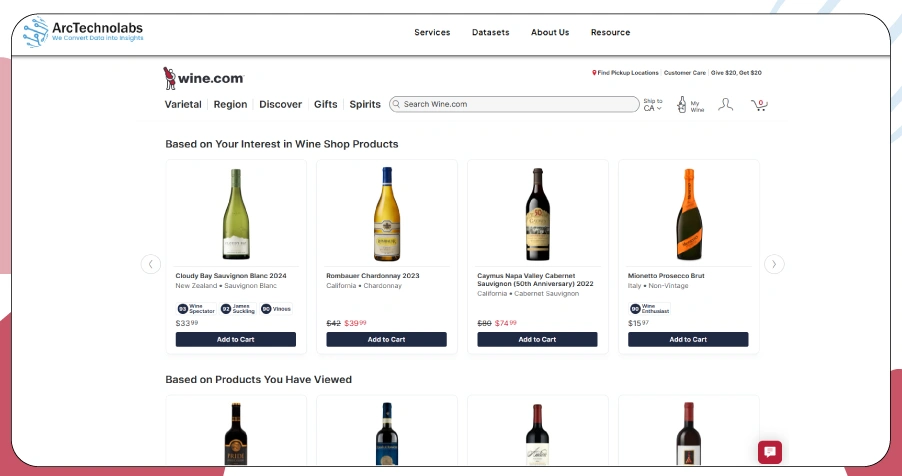
We specialize in delivering scalable solutions built around Wine.com Price Scraping to help wine retailers, analysts, and distributors gain valuable regional pricing insights. By capturing structured data from Wine.com, we enable clients to identify pricing gaps, spot demand shifts, and optimize their strategies with precision.
Our tailored services help businesses stay ahead of regional wine trends with speed, accuracy, and compliance.
Here’s how we assist your wine pricing intelligence journey:
- Setup of automated Wine.com scraping pipelines.
- Delivery of state-wise wine pricing data.
- Quick visual dashboards for trend spotting.
- Real-time updates for pricing fluctuations.
- Clean, structured datasets ready for analysis.
- Ongoing technical support and optimization.
With our data-driven approach, you can confidently use a Regional Wine Pricing Dataset to align your pricing strategies with actual market behavior.
Conclusion
Gaining deeper visibility into regional wine pricing is no longer a luxury—it’s a necessity. With Wine.com Price Scraping, businesses can track state-wise fluctuations, monitor consumer demand, and fine-tune their pricing strategy with confidence.
With access to a reliable Wine Price Analysis wine.com framework, your team can respond more quickly to market changes and develop more region-specific pricing strategies. Contact ArcTechnolabs today to begin building your customized wine pricing intelligence system tailored to the U.S. market.









